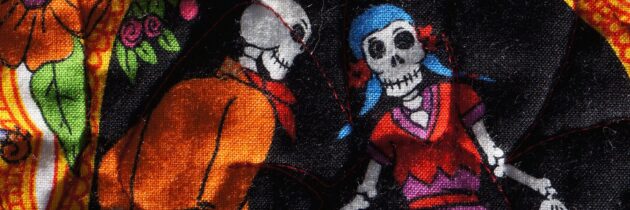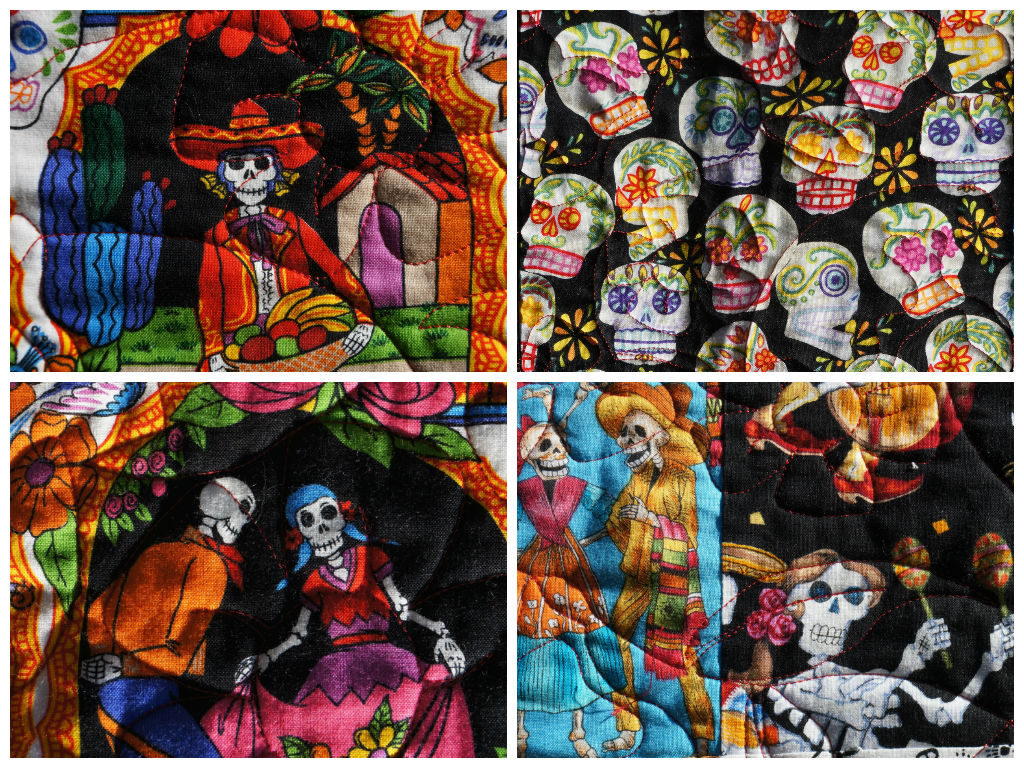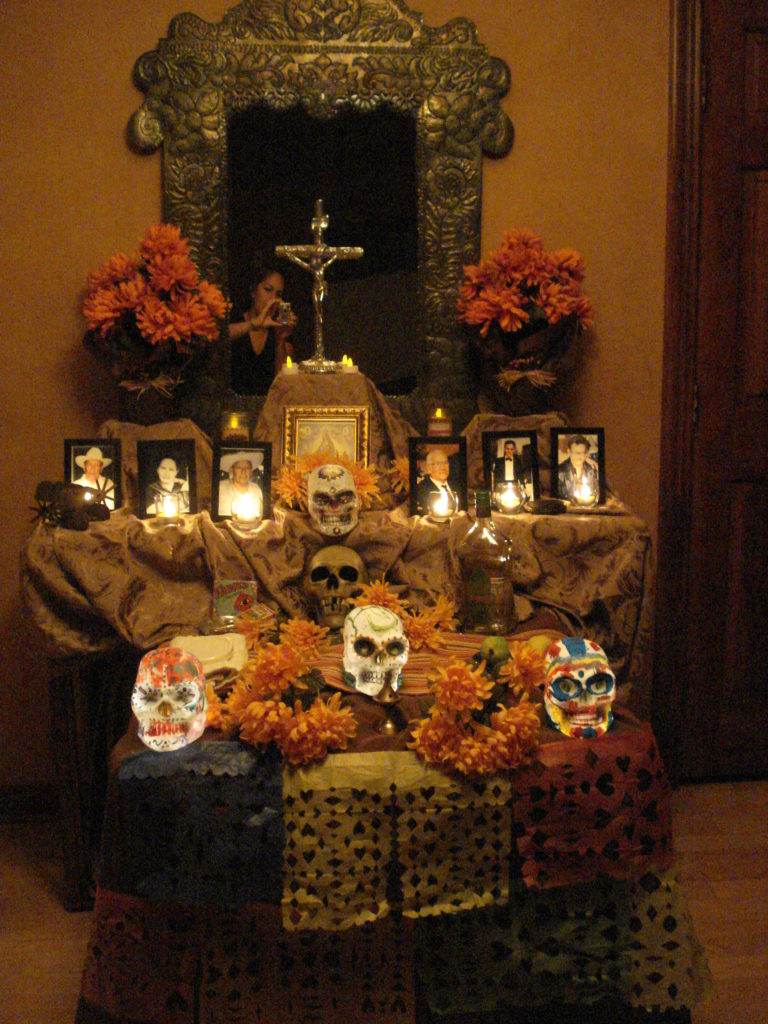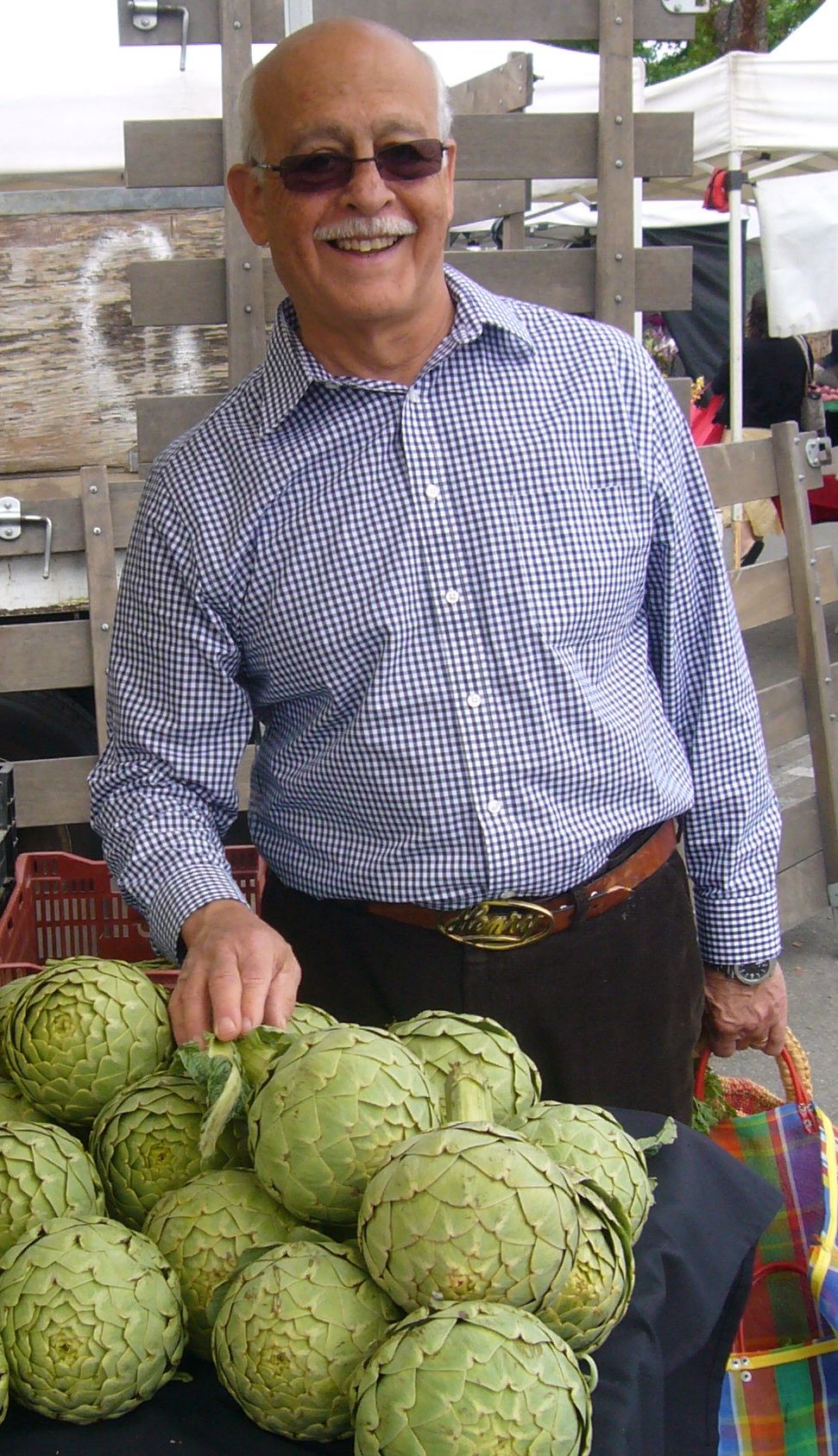Día de los Muertos
Día de los November 1. Although marked throughout Latin America, Día de los Muertos is most strongly associated with Mexico, where the tradition originated.
The ritual honors the dead with a lively, colorful and festive event dating back to the indigenous Mayans, Mexicas, Nahua and Totonac peoples of Mesoamerica. Flowers, gifts, fruits, candles and music, things the the dead enjoyed in life are displayed on altars. Tradition holds that the dead return to earth to visit their living relatives. They are not seen, but their presence is surely felt.
The altar is the cornerstone icon for Día de los Muertos. They are designed in brilliant colors, adornments and laid out with a variety of personal and symbolic articles placed there to welcome the departed souls. One example – a glass of water may be set out for a thirsty soul who traveled from the afterlife. An altar can be as simple as using a tabletop or placing it on the floor. Some altars are constructed with 2,3,4 or 7 Levels.
The meaning of each altar level or Level can be explained in terms of their original meaning attributed by the indigenous civilizations in pre-hispanic Mesoamerica. However, there is no certainty that these definitions are the direct elements of pre-Columbian festivals and rituals.
Two Levels – Earth and Sky. Fruits of the earth were attributed to the sun, rain and wind
Three Levels – Earth, Sky and Afterworld. Indigenous civilizations were known to recognize it’s ancestors and afterworld.
Four Levels – the four Aztec Cosmos of the Afterlife or Four Seasons
Catholicism came to Mexico with the Spanish conquistadores and in efforts to convert the people, their rituals were commingled with All Saints Day and All Souls Day. They redefined the three levels as Earth, Purgatory and Heaven.
In a typical seven altar level, items are placed to honor a deceased and to guide them with comfort in their return journey to visit from the afterlife. This example conforms to the Roman Catholic traditions for an altar.
Level one – Image of a saint or the Virgin Mary
Level two – Candles for the souls of purgatory
Level three – Toys and dolls for the souls of deceased children
Level four – Pan de Muerto with it’s iconic adornments
Level five – Favorite foods of the deceased
Level six – A photograph of the deceased who is honored
Level seven – The cross of a rosary made from tecolote (fruit).
See these recipes on my blog that are commonly served during this celebration:. Calabasa en Tacha and Amaranth Cookies.





Your post reminds me of my childhood and my mother who celebrated with attending church and a stop at el calvario to deliver flowers. My brother Freddie will be 92 on a Dia de Los Santos. His middle name is Santos.